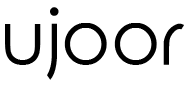Blockchain Facts: What is it? How it works and how it can be used?
What is it? How it works and how it can be used?
Even though blockchain was first introduced in October 2008, it has gained more momentum in recent years. Originally introduced as a part-proposal for crypto-currencies, Blockchain has the potential to be a bedrock for record-keeping systems across the world.
What exactly is a Blockchain?
What is a blockchain? How does it work? How are blockchains used? These questions have been asked by many people across the world, as they have become more and more ubiquitous in our daily life.
A blockchain is a digital, distributed ledger that can be used to store data in an immutable way. It’s essentially a decentralized database that uses cryptography to ensure the integrity and security of any information stored on it.
This means that once you’ve entered something into the blockchain, it can’t be changed or deleted—it’s permanently recorded and verified by the network of computers that make up the blockchain.
Blockchain was first used for Bitcoin – for maintaining a secure and decentralized record of transactions. Blockchain technology was first developed in 2008 by Satoshi Nakamoto (a pseudonym) who published an academic paper titled “Bitcoin: A Peer-to-Peer Electronic Cash System”
How Blockchain is resolving problems?
Everything that we use today in economic, banking, legal or political systems such as contracts, transactions, and records is important and essential for governance as a whole. They are critical to managing actions both social and economic. In a world where there is Blockchain, contracts and such documents are embedded in digital code and stored in transparent, shared databases, where they are protected from deletion, tampering, and revision. There would be a record of every transaction, every process, and every digital signature that can be verified and stored, enabling individuals, organizations, and machines to freely interact and transact with each other without any third party or intermediary such as bankers, lawyers, or brokers.
Blockchains can be used for many different purposes—from storing personal information to tracking assets like gold bars or diamonds securely across borders without having to rely on a third party like Visa for processing payments (or trusting them not to steal your gold). Blockchains have many possible uses beyond just tracking assets and transactions: they can also be used for voting systems or verification processes like ID checks.
That is the immense potential of blockchains!
How does Blockchain work?
Blockchains are made up of blocks: groups of records (also known as transactions) that are timestamped and grouped together in sequential order. Each block contains different pieces of information about your transaction, including its timestamp, who sent it and when they sent it, how many people received it, and how much money was involved in each transaction. The blocks are connected together via hash functions—essentially strings of zeros and ones—that link them together without relying on any kind of central authority or single point of failure.
Let’s see an example based on the use of blockchain in cryptocurrency: If Alice sent Bob $5,000 worth of Bitcoin through her account. When she sends him the money, it would appear as an entry in Bob’s block along with his unique ID number (which identifies him specifically). Because each entry has its own unique number, there’s no need for multiple copies of the same information: instead, you only need one copy (and one ID number) for all transactions involving Bob from now on.
Blockchains have become increasingly popular among cryptocurrency enthusiasts because they offer a way to ensure the authenticity of digital assets and reduce fraud risk.
